My old Kawasaki Ninja didn’t have a fuel gauge. I had to rely on the reserve fuel switch to keep track of gas.
But all my other motorcycles – they all had/have fuel gauges in them.
So why don’t some motorcycles have fuel gauges? The main reason some motorcycle models don’t include fuel gauges is because fuel gauges are inaccurate and non-reliable. The irregular motorcycle tank shape, primitive design, lack of electronic sensors – all make up for the fuel gauge inaccuracies.
One key thing to note. Only a few carburetted motorcycles don’t have fuel gauges in them.
Modern motorcycles have improved upon the fuel gauge design. We have even moved to digital fuel indicators. As opposed to the analog one before.
Reasons why some bikes don’t have fuel gauges
Let’s dive into the reasons why few motorcycles don’t include fuel gauges.
The main reason is of course the inaccuracy. Why is that? Let’s dive right in along with a few other reasons.
#1: Fuel gauges are inaccurate
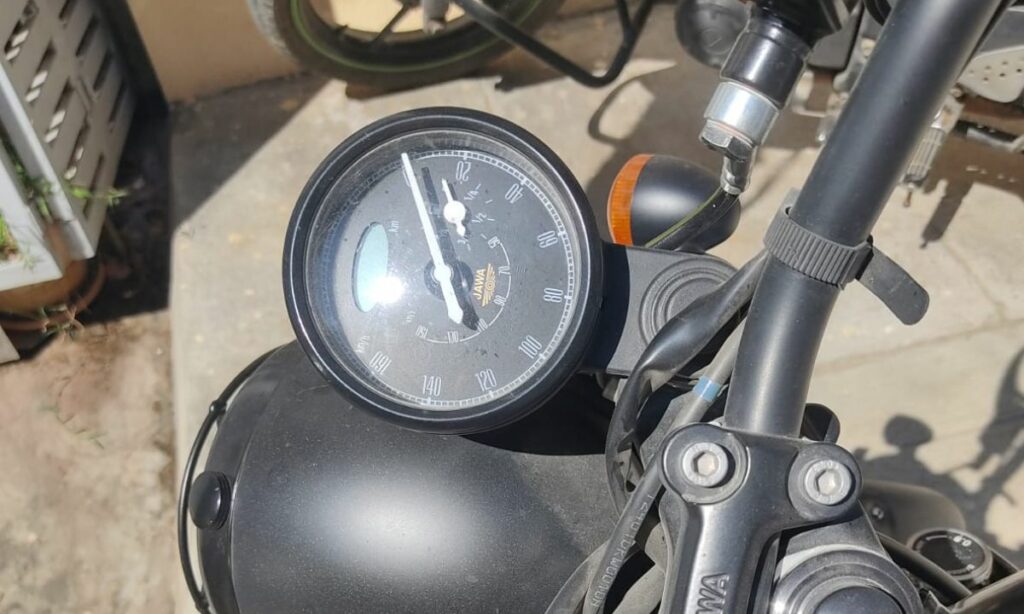
Fuel gauges in motorcycles, especially carburetted motorcycles, are primitive and inaccurate.
The readings you see on the motorcycle fuel gauges are not completely reliable.
Add to it, the irregularities in the fuel tank shape. How do you even describe the shape of the motorcycle fuel tank?
No wonder, the fuel gauge readings are non-reliable.
Lastly, the fuel gauge working itself is not so great for precision.
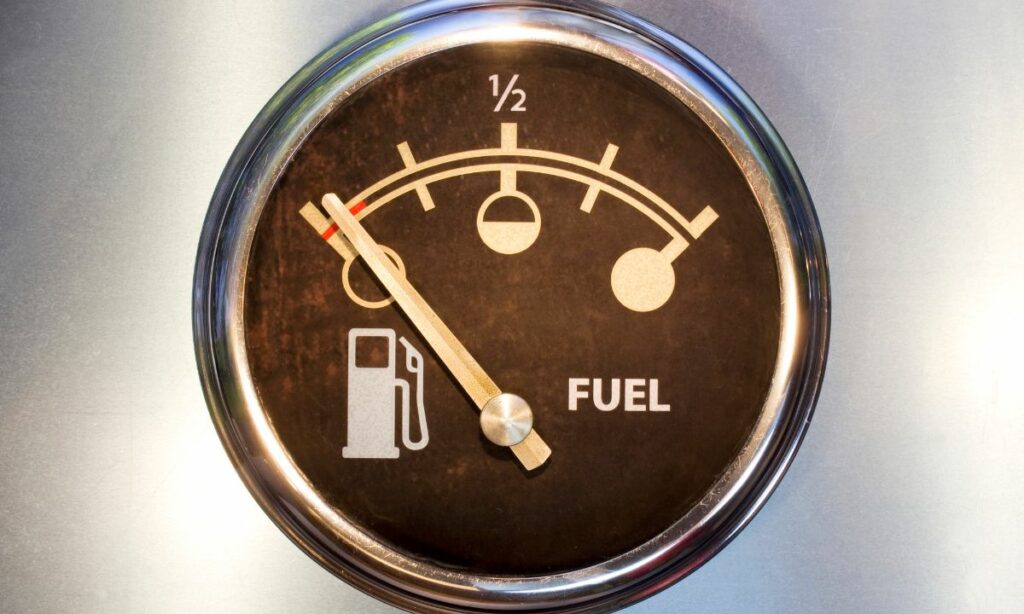
There is a float, which floats on the gas surface.
As the gas levels changes, the float moves up and down accordingly. Based on the float position, there is a bimetallic strip connected that varies the resistance.
Why is resistance important?
In the fuel gauge indicator, there are two magnetic coils that makes the needle move. As the resistance changes in the metal strip, the current flow varies to these two magnetic coils.
Based on the magnetic fields from these two coils, the needle moves and indicates the fuel levels.
You see the variables here. The float position, the strip resistance, the magnetic fields by 2 coils, and the needle.
The setup is sensitive to all these variables and the deviation will be large for even minor errors in any of these variables.
Still, you can’t deny one thing.
These fuel gauges serve a purpose.
What’s that?
They caution the rider when the fuel level is low in the tank. The gas is emptying out, and the gauge – no matter how inaccurate it was before – accurately tells the gas is empty.
Yet, many motorcycle manufacturers do away with the fuel gauges. Citing their irregularity and inaccuracy, they don’t include the fuel gauges in motorcycles.
There is a silver lining though.
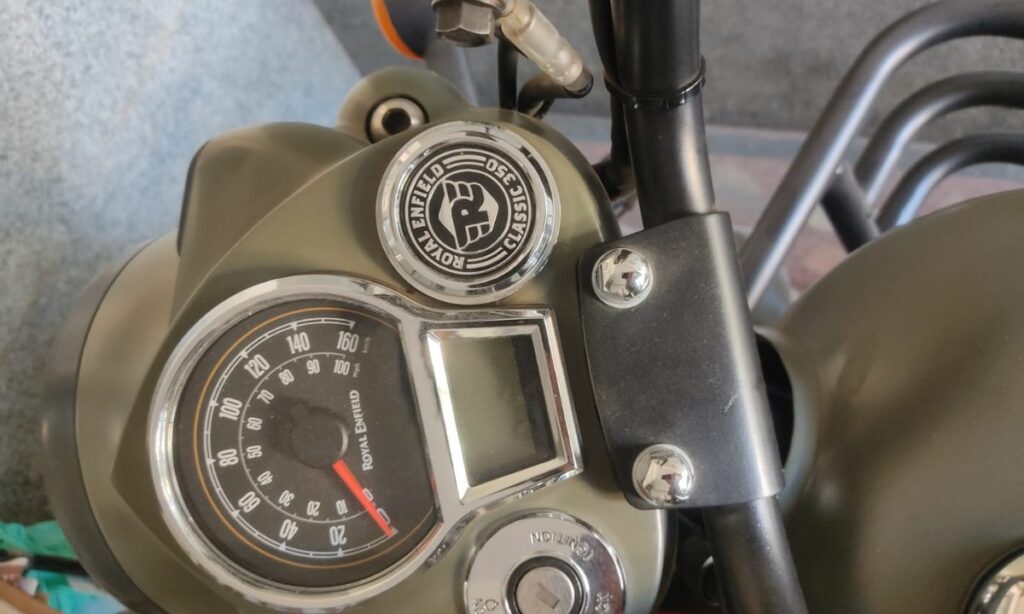
Modern motorcycles, even those that don’t have fuel gauges are incorporating low fuel indicators.
The low fuel indicator shows a warning light when the gas is about to empty.
#2: The setup takes up space
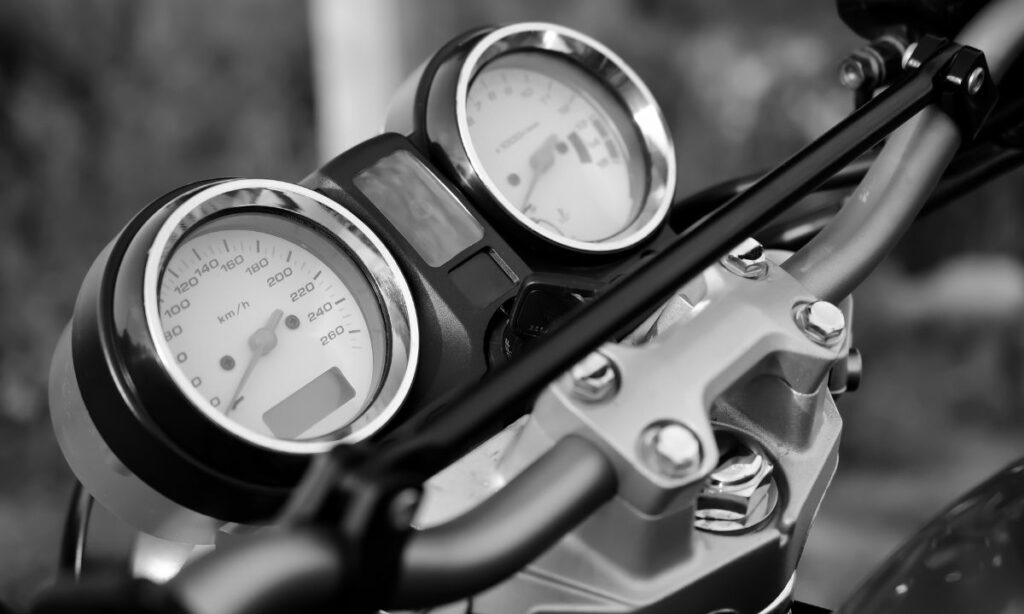
Every setup – no matter how simple it is – takes up space in the motorcycle.
And unlike cars, motorcycles are compact.
Each and every part, circuit, mechanism, setup, and connection demands adequate space to function well.
The fuel gauge is no exception.
There is a sender unit. Which needs to be fit in. The sender further consists of a float, a wiper, and a resistor.
There is the fuel gauge itself. Which takes up space in between or along with the speedometer and the tachometer.
Connected to the gauge, there is a bimetallic strip setup. This strip moves the gauge needle. So pretty important you can say. After all, where the needle points is what we are looking for.
Wait that’s not it. You need to connect the sender unit to the fuel gauge’s bimetallic strip.
Also, you need to connect the battery to the sender unit. You need power after all. And close the circuit between the battery, the sender unit, and the fuel gauge.
You got the idea.
The setup, no matter how simple, takes up space and demands to be fit in neatly.
And motorcycle manufacturers want to minimize the number of parts as much as possible.
Heck, some motorcycles have their kickstarts taken out!
So fuel gauges should not be a big surprise.
#3: Adds up the vehicle cost
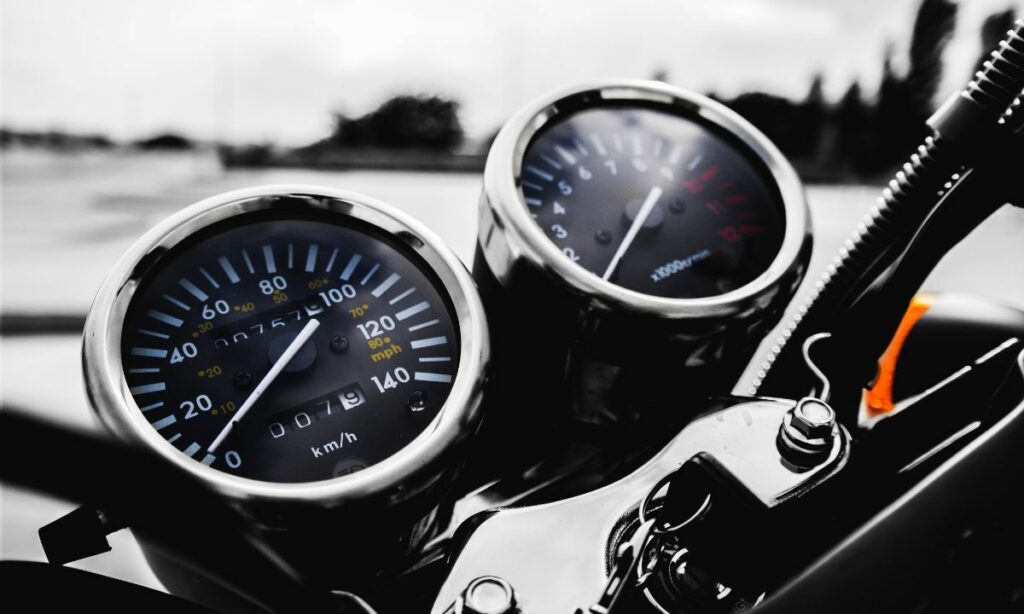
Adding the fuel gauge adds up to the motorcycle’s cost.
I know I know. How much difference does a fuel gauge make right.
I think the cost is a weak reason as well.
After all, installing a $25 fuel gauge should not be a big thing for a motorcycle manufacturer.
And it isn’t for most motorcycle models.
Still, they do it.
The only explanation I can think of comes from a friend of mine who is into manufacturing.
And according to him, any cost efficiency is a valuable thing.
Maybe, that’s what it is. Or I am completely wrong here. Who knows how thrifty these motorcycle manufacturers are!
Modern fuel gauges

Unlike earlier years, modern fuel gauges are no more analog.
With more and more ECUs (electronic controlled units) introduced to motorcycles, more and more setups have moved digital.
Of course, the most notable of them is the fuel injector.
Fuel injectors have replaced carburetors in most modern motorcycle models. Purely from a performance perspective, fuel injectors are superior to carburetors.
Also Read: If fuel injectors are superior, why do motorcycles still use carburetors?
Why is that?
Fuel injectors use sensors and ECU to determine how much fuel should go to the engine.
We are digressing.
The point is modern sensor-driven ECU-controlled digital systems work better than the old mechanical systems.
And fuel gauges are no exceptions!
Digital fuel gauges in fuel-injected motorcycles are far more reliable and far more accurate.
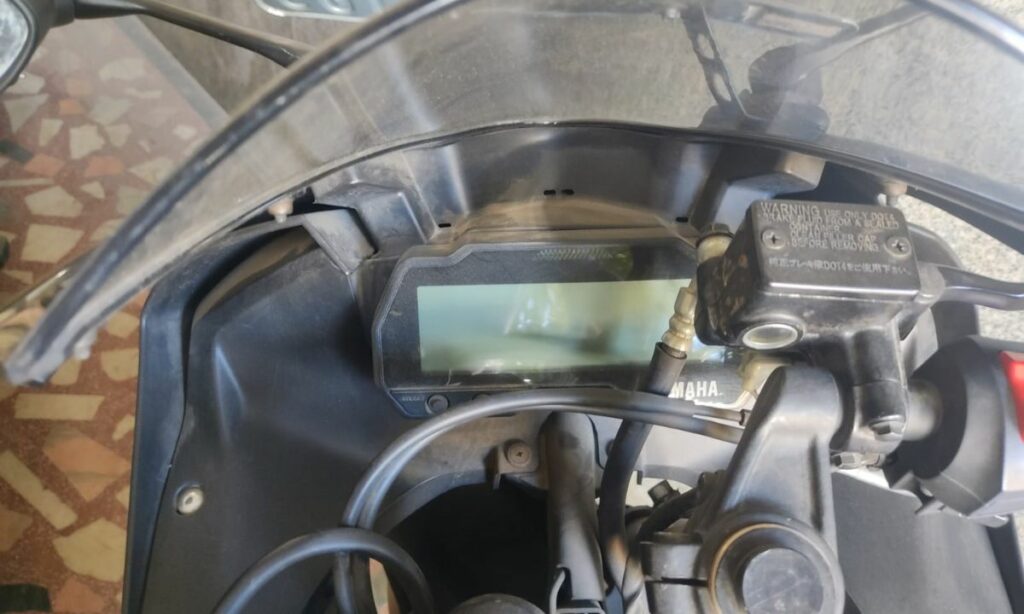
So with no surprise, all fuel-injected motorcycles have fuel gauges in them.
The motorcycles that don’t have fuel gauges are for sure carbureted motorcycles. Which brings us to our next section.
Only a few carbureted motorcycles lack fuel gauges
This is a key thing to note.
The few motorcycles that don’t have fuel gauges are all carburetted motorcycles.
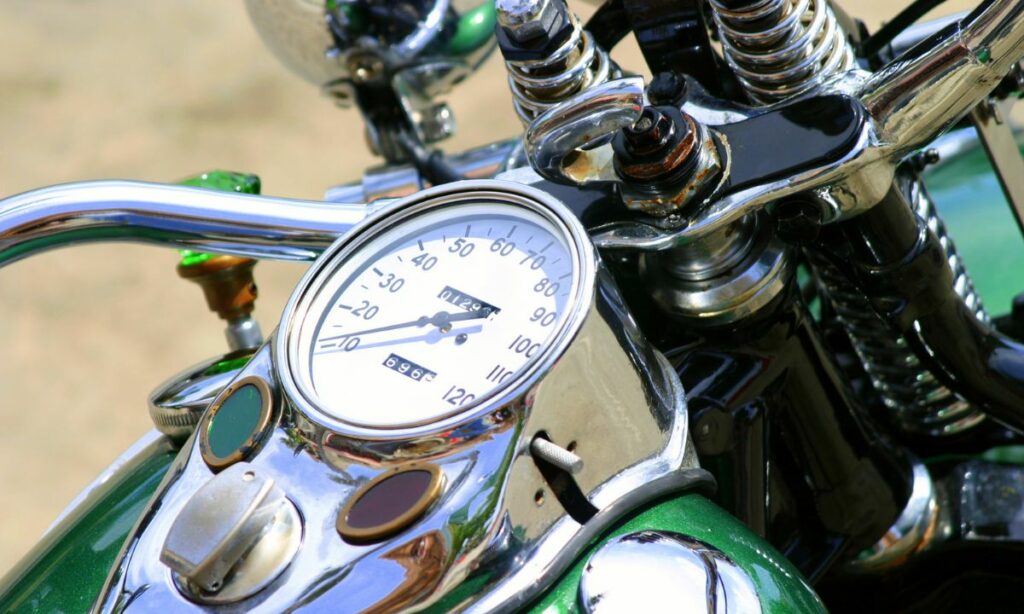
Fuel-injected bikes, as discussed above, have better and more reliable fuel gauges.
That’s why we rarely (if ever) see a fuel-injected motorcycle NOT having a fuel gauge.
Why does this matter?
These carburetted motorcycles and lack of fuel gauges again reinforce that mechanical fuel gauges (which are used in carburetted motorcycles) are inaccurate and non-reliable.
How to NOT run out of gas then
Enough with the why. Let’s talk – what to do when the motorcycle does NOT have a fuel gauge then.
How can we identify low fuel levels when there is no fuel gauge?
There are a few hacks.
First, all carburetted motorcycles come with a reserve fuel switch. Whenever the fuel gets emptied on the main tank, you can switch to the reserve tank for some extra fuel. That’s an indication to fill up the gas.
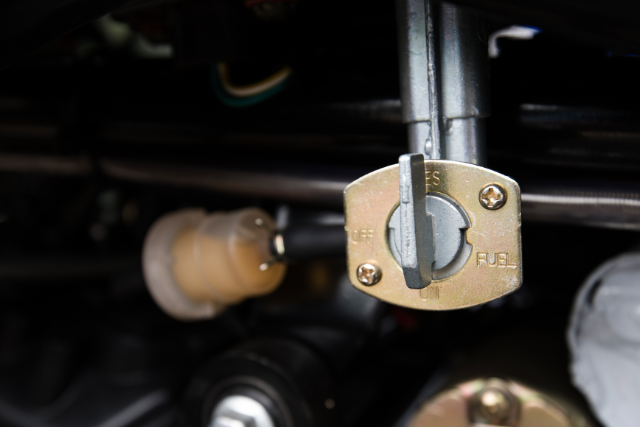
Second, you can track the distance traveled. Odometer or the digital reading on the motorcycle shows the distance. You can reset it if it is a trip odometer. You should also know your bike’s gas mileage to determine when to fill the gas next.

Third and last, fill up the gas every few days with the same amount. This is a naive method and may not be accurate. But it’s simple and stupid. You can open the tank cap and look. If you go overboard, the tank shows full tank. If you underestimate, there is the reserve tank to fall back on.
FAQs
Most Harley Davidson motorcycles have fuel gauges. But some Harley motorcycles don’t. Especially the older models.
Most Harley Davidson Sportster motorcycles don’t have a fuel gauge. But in the recent models, they have a low fuel indicator. The indicator shows a warning light when the fuel is about to empty.
